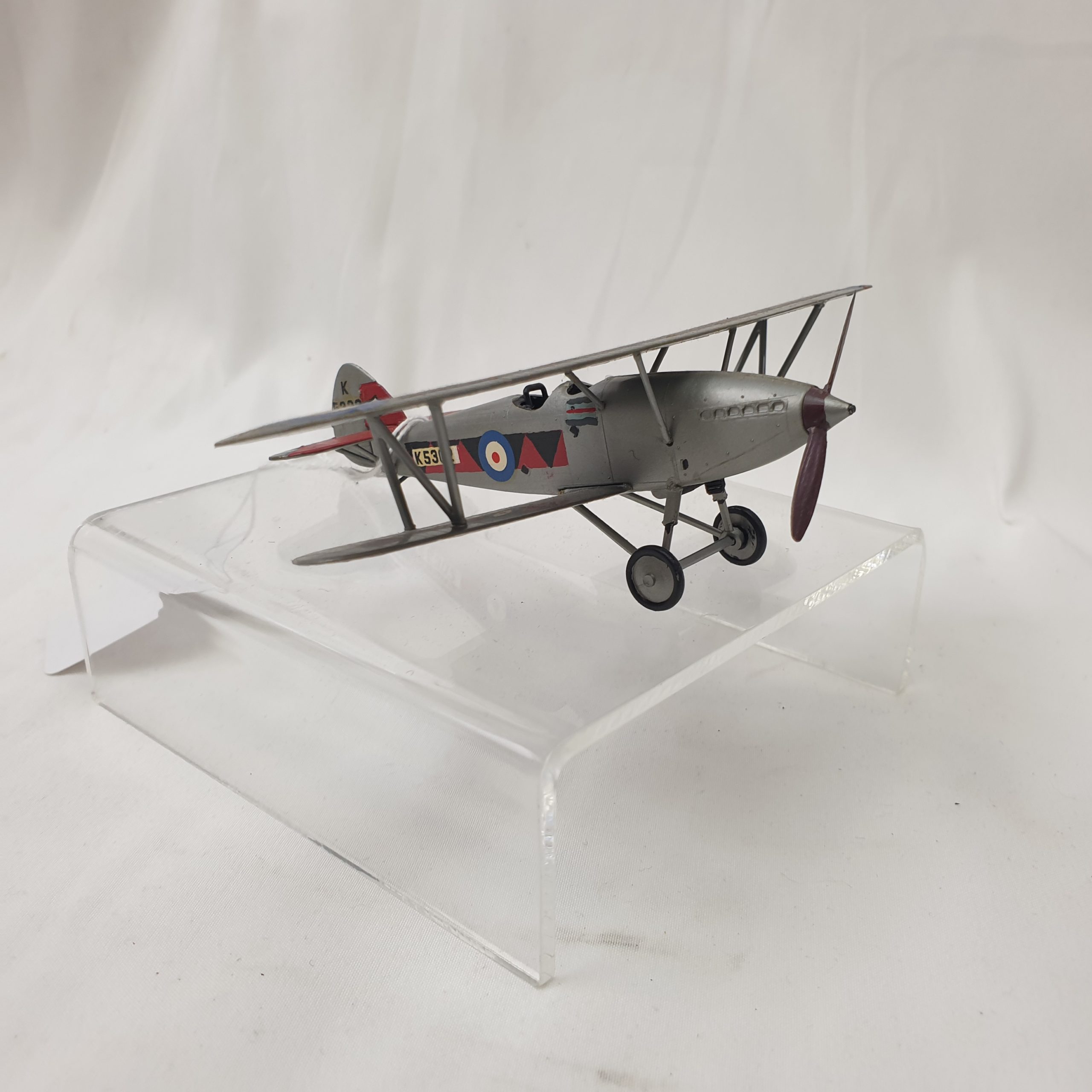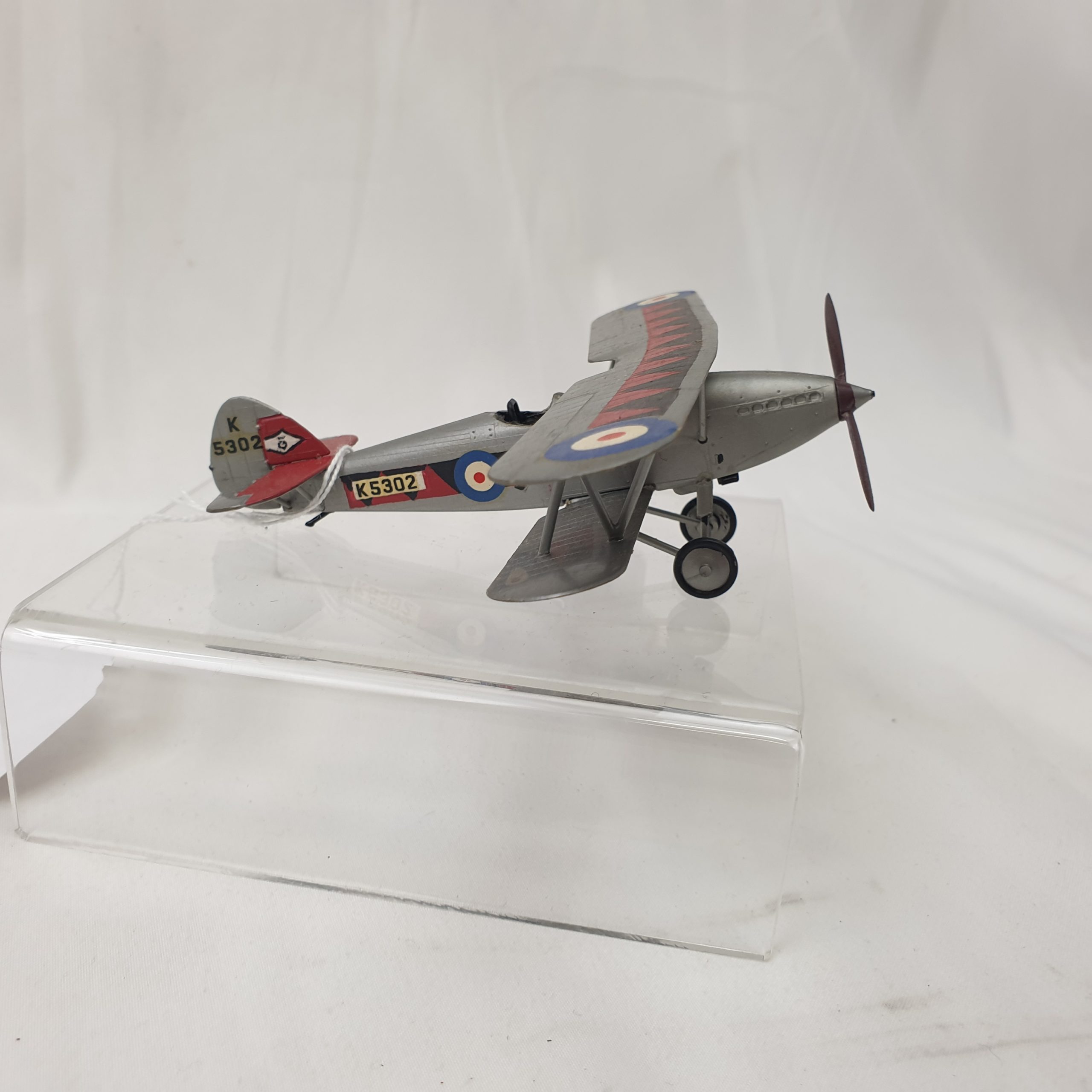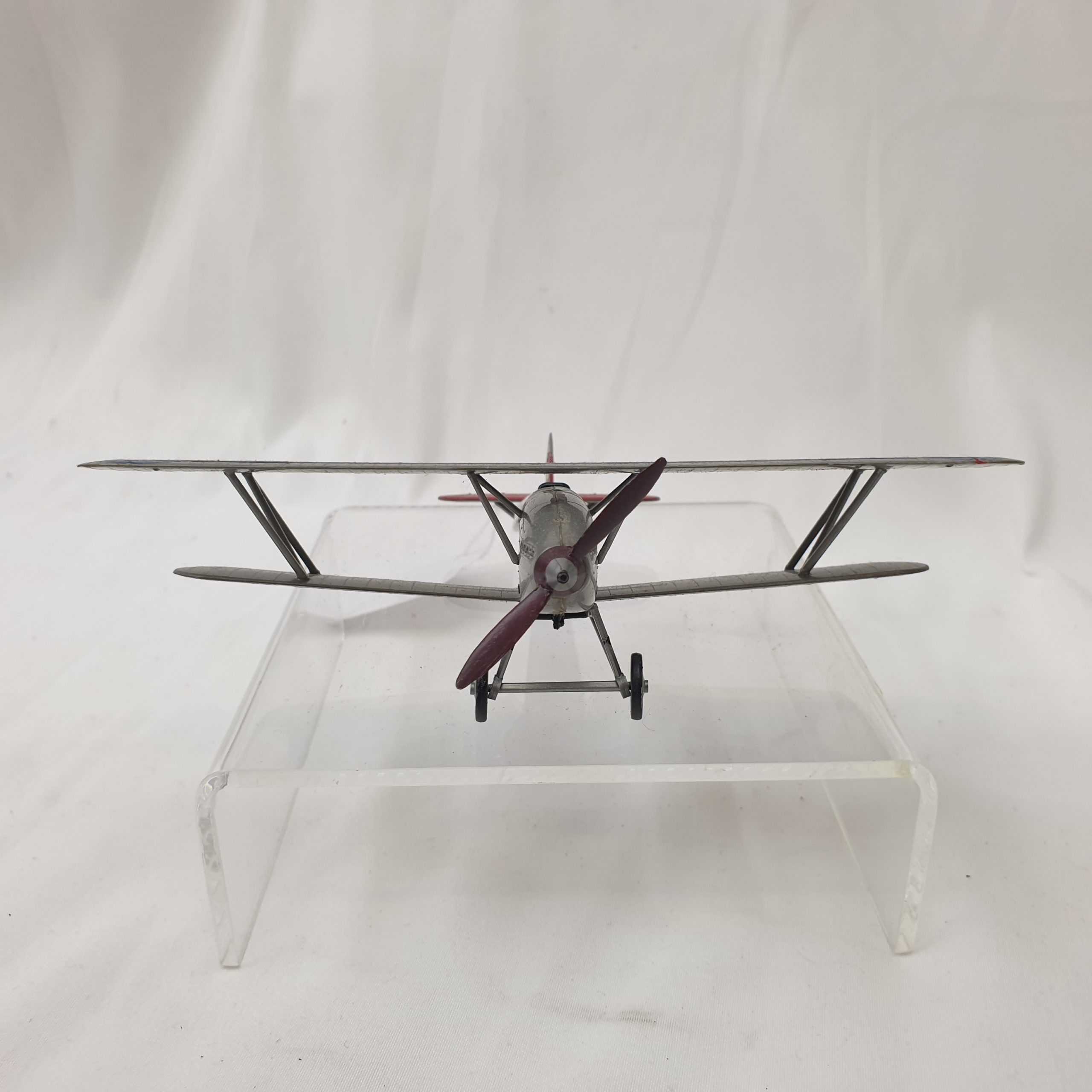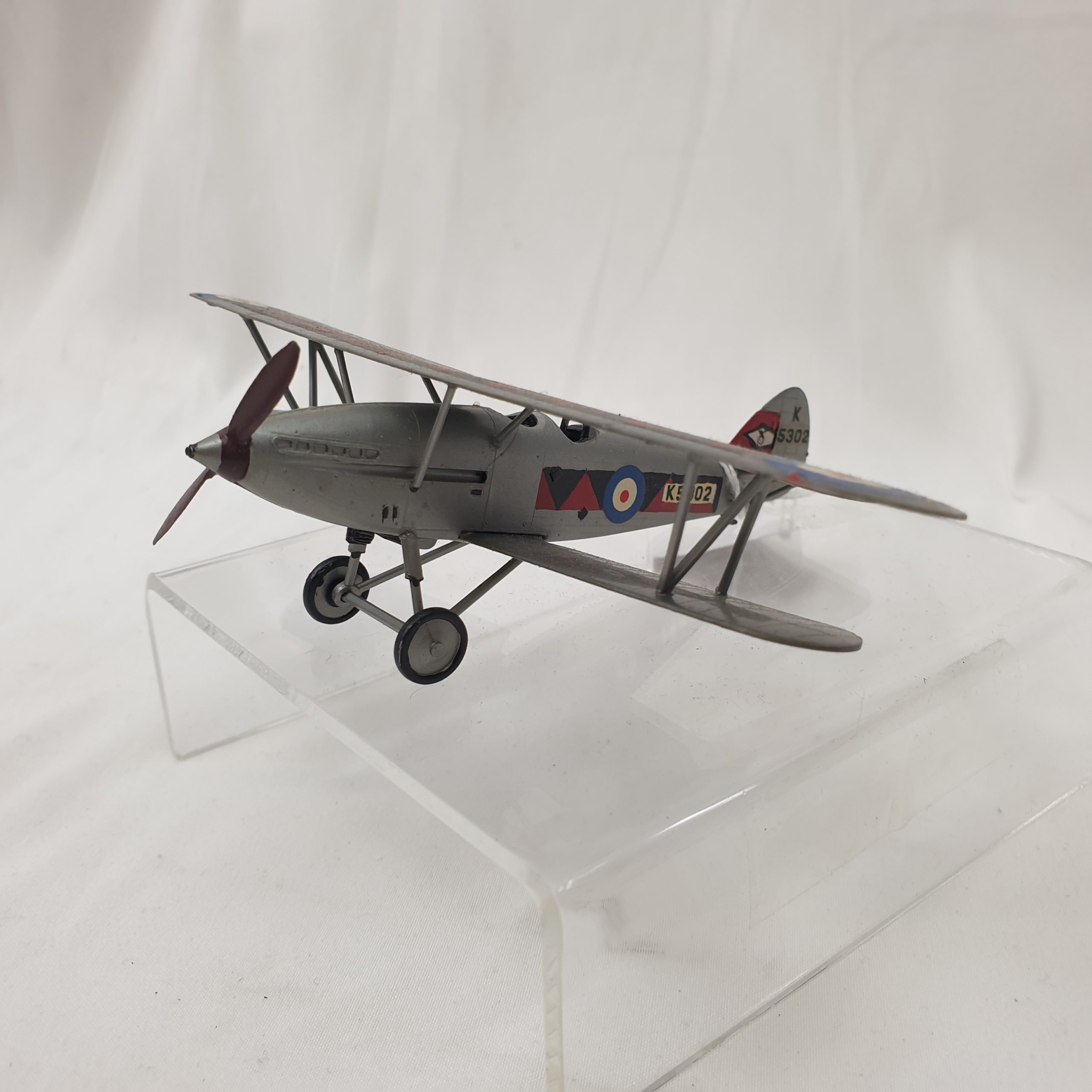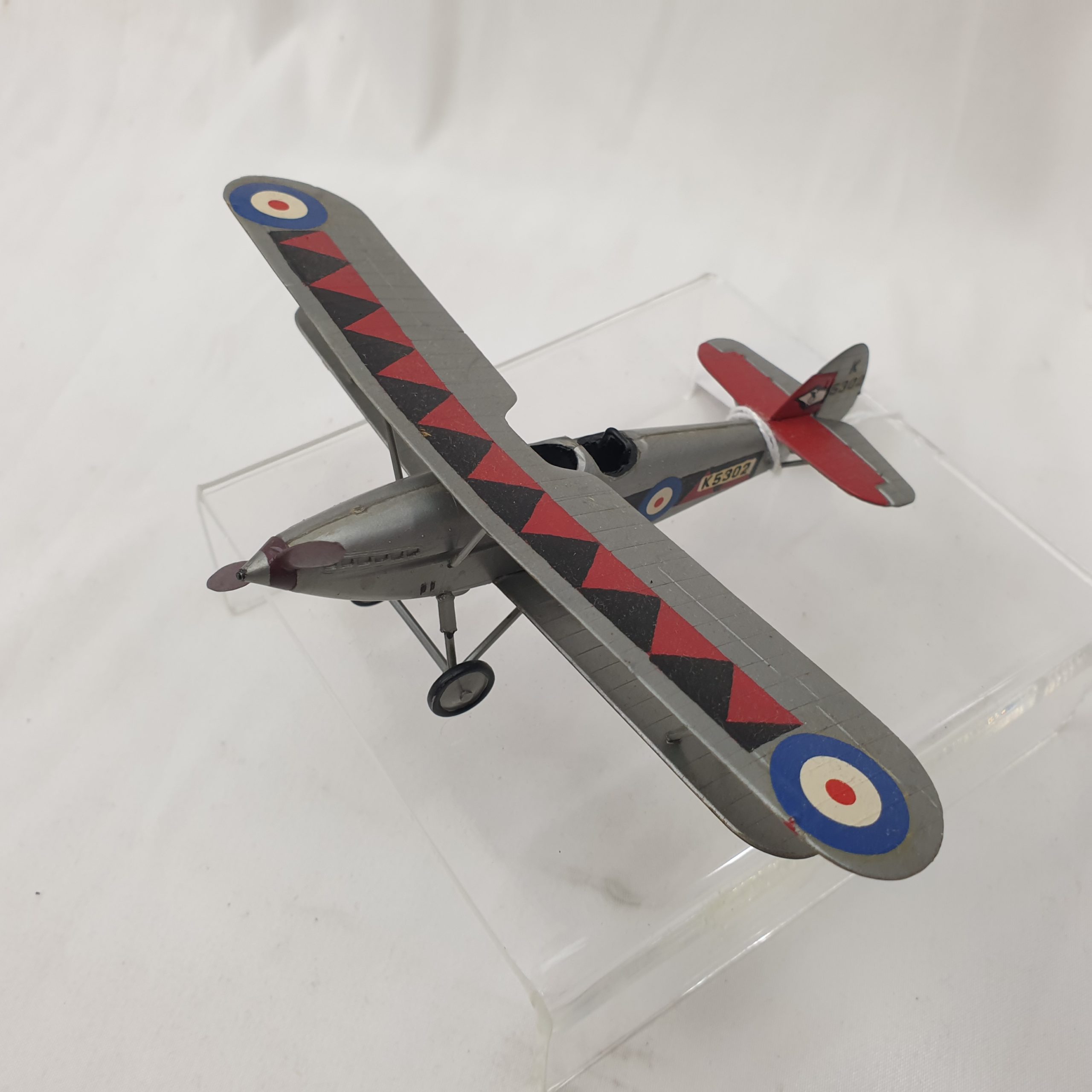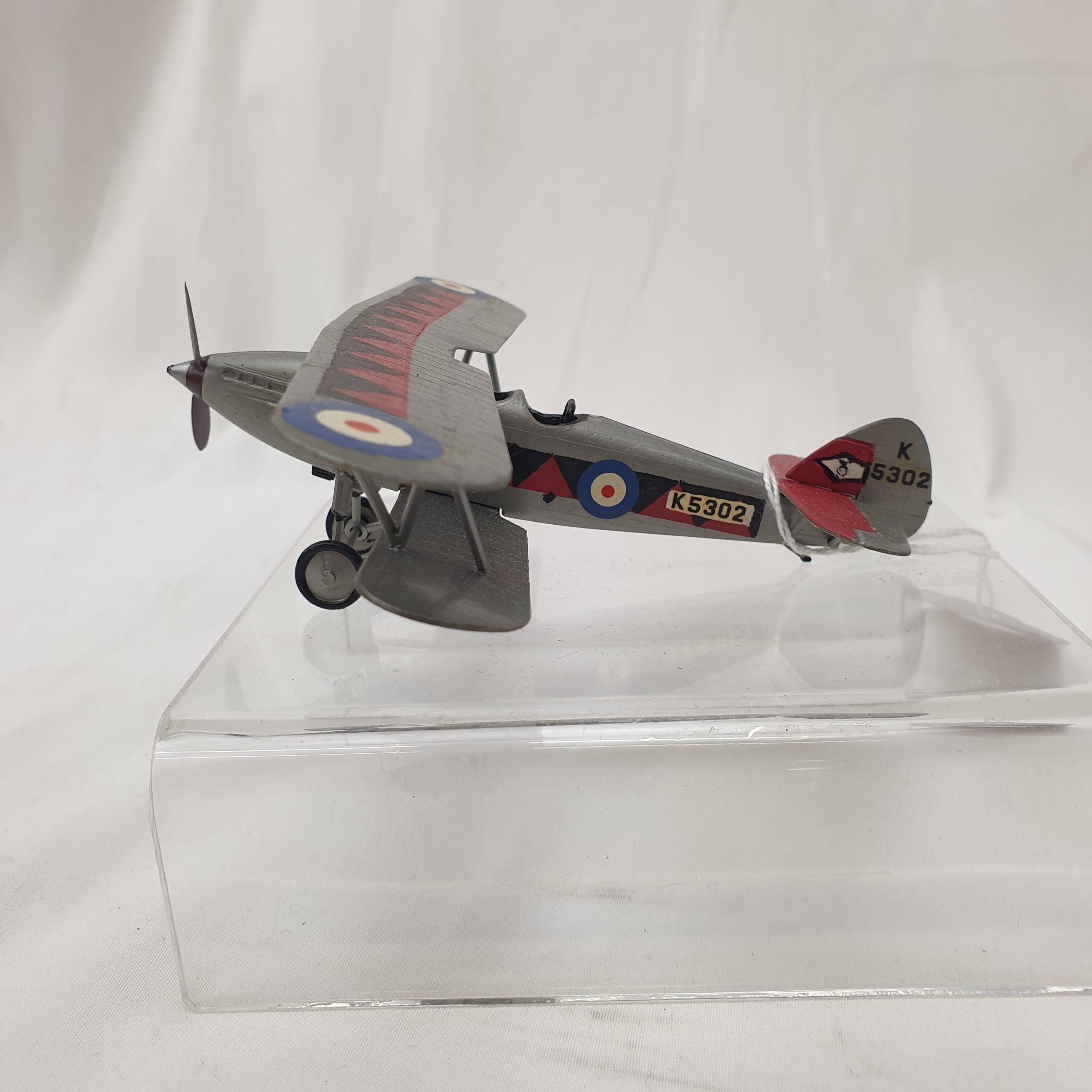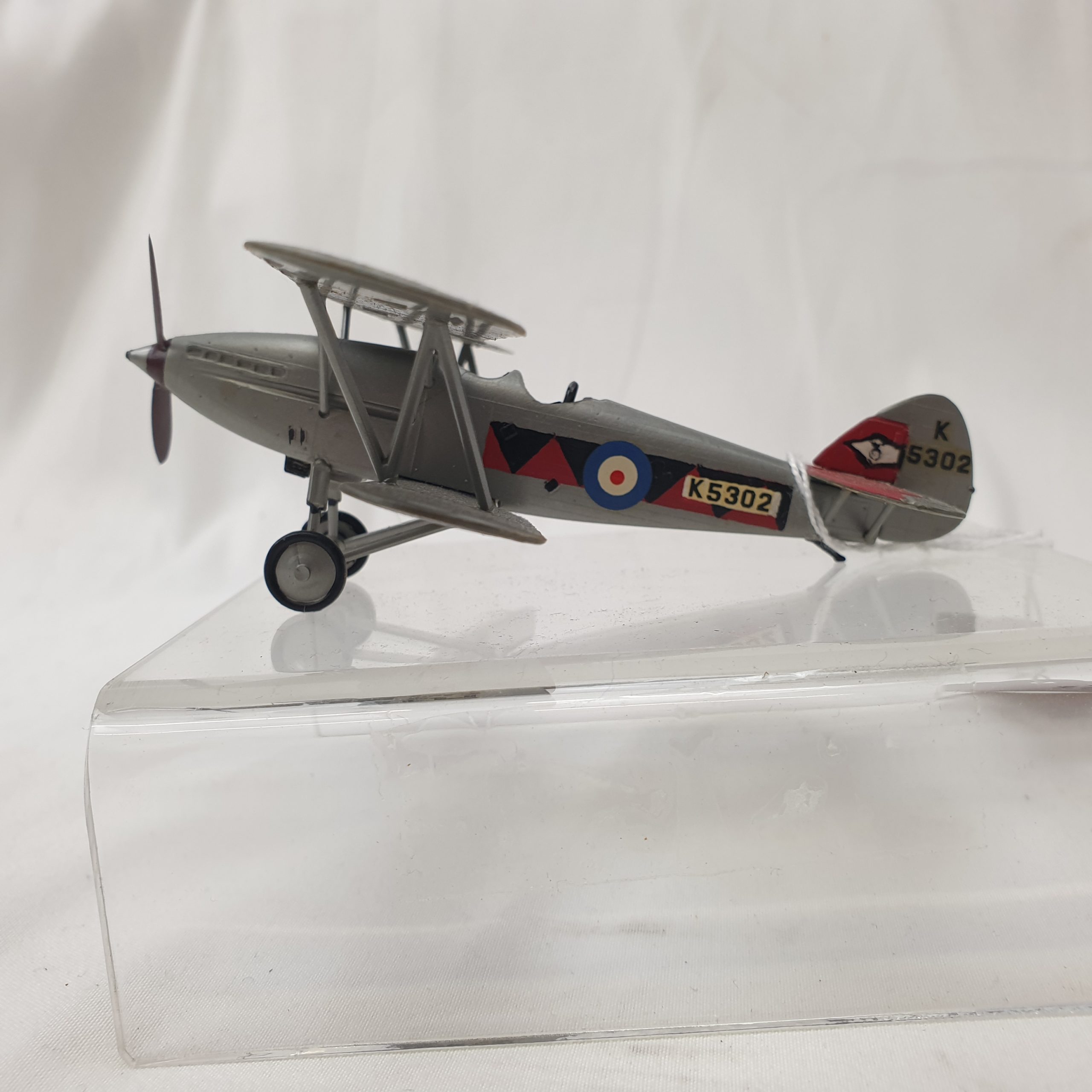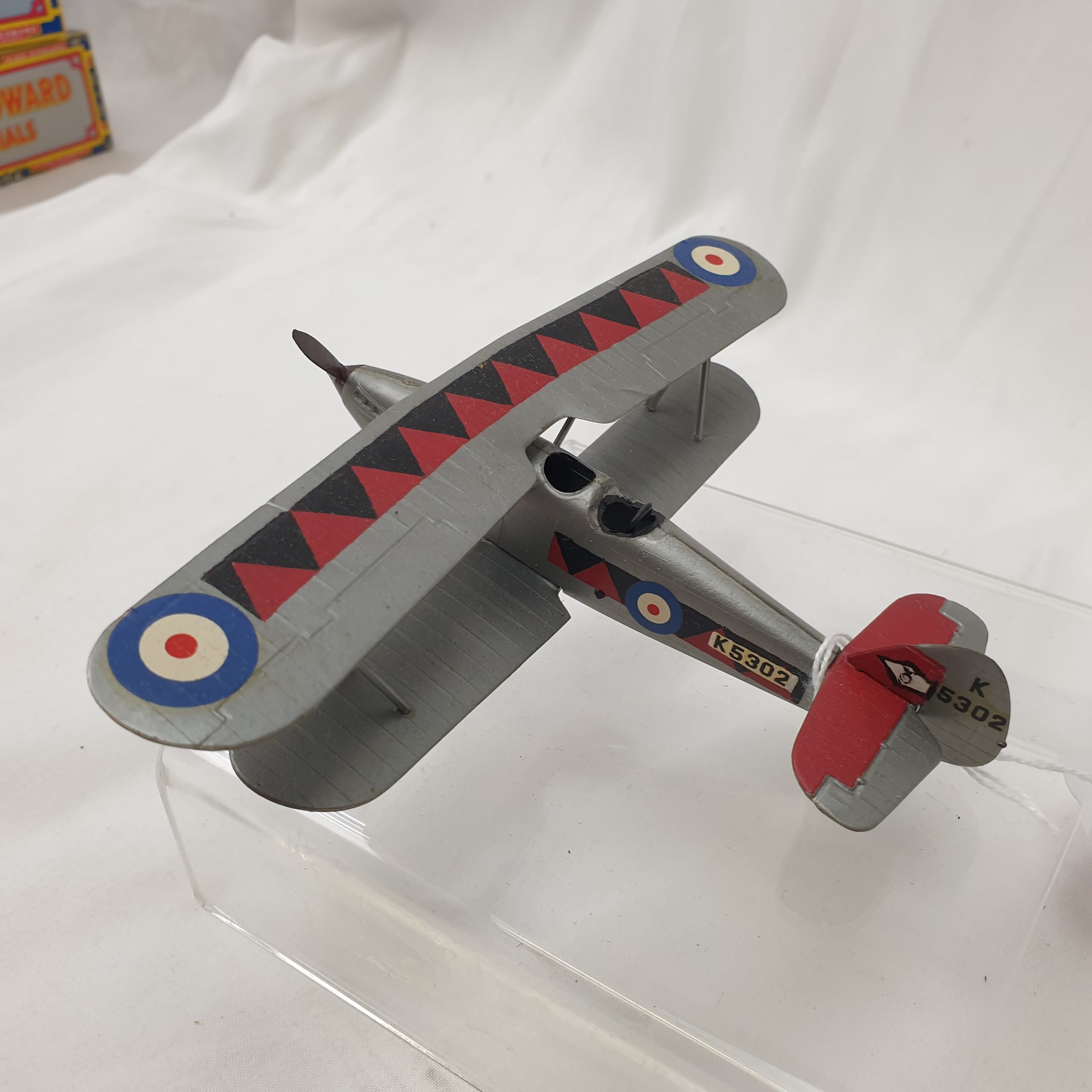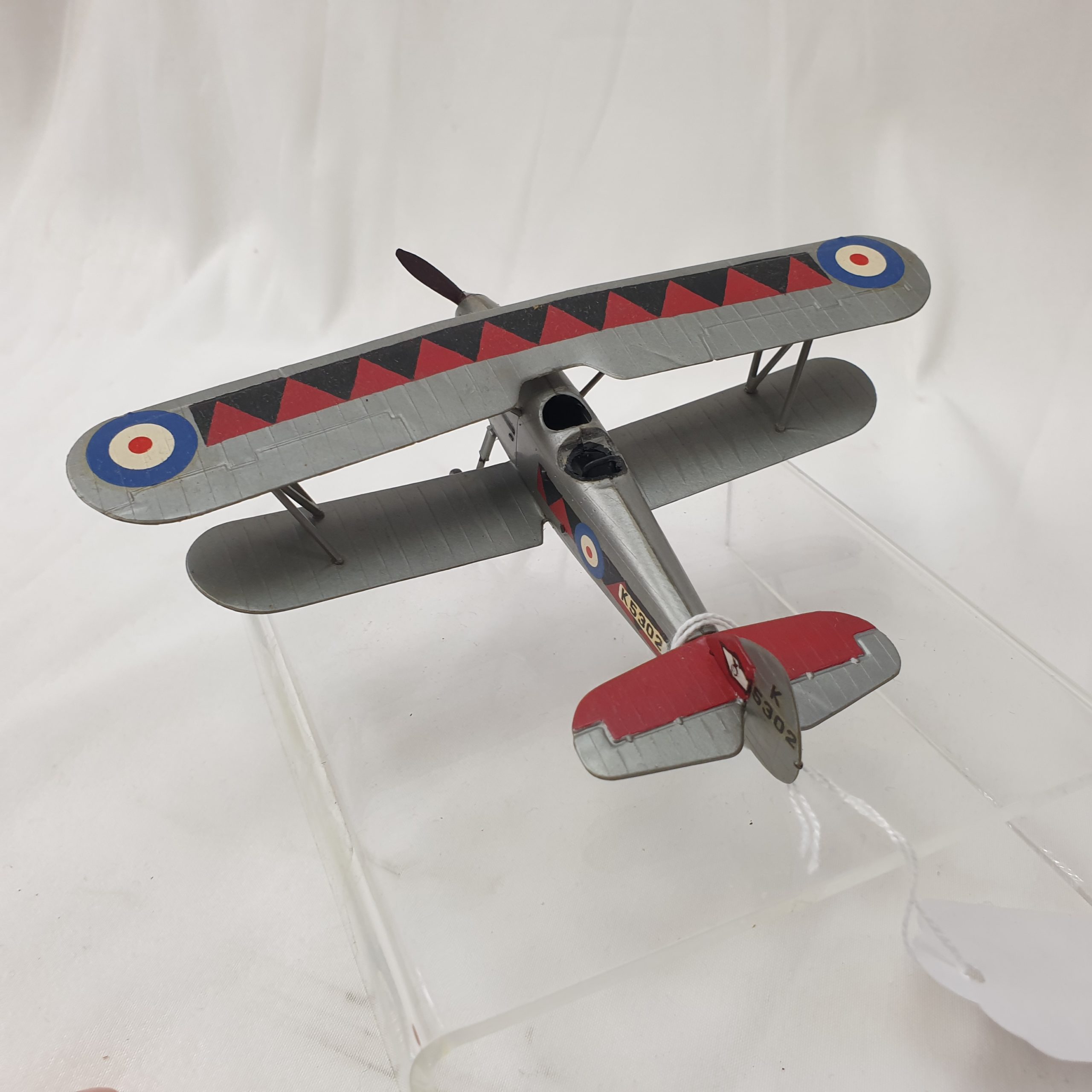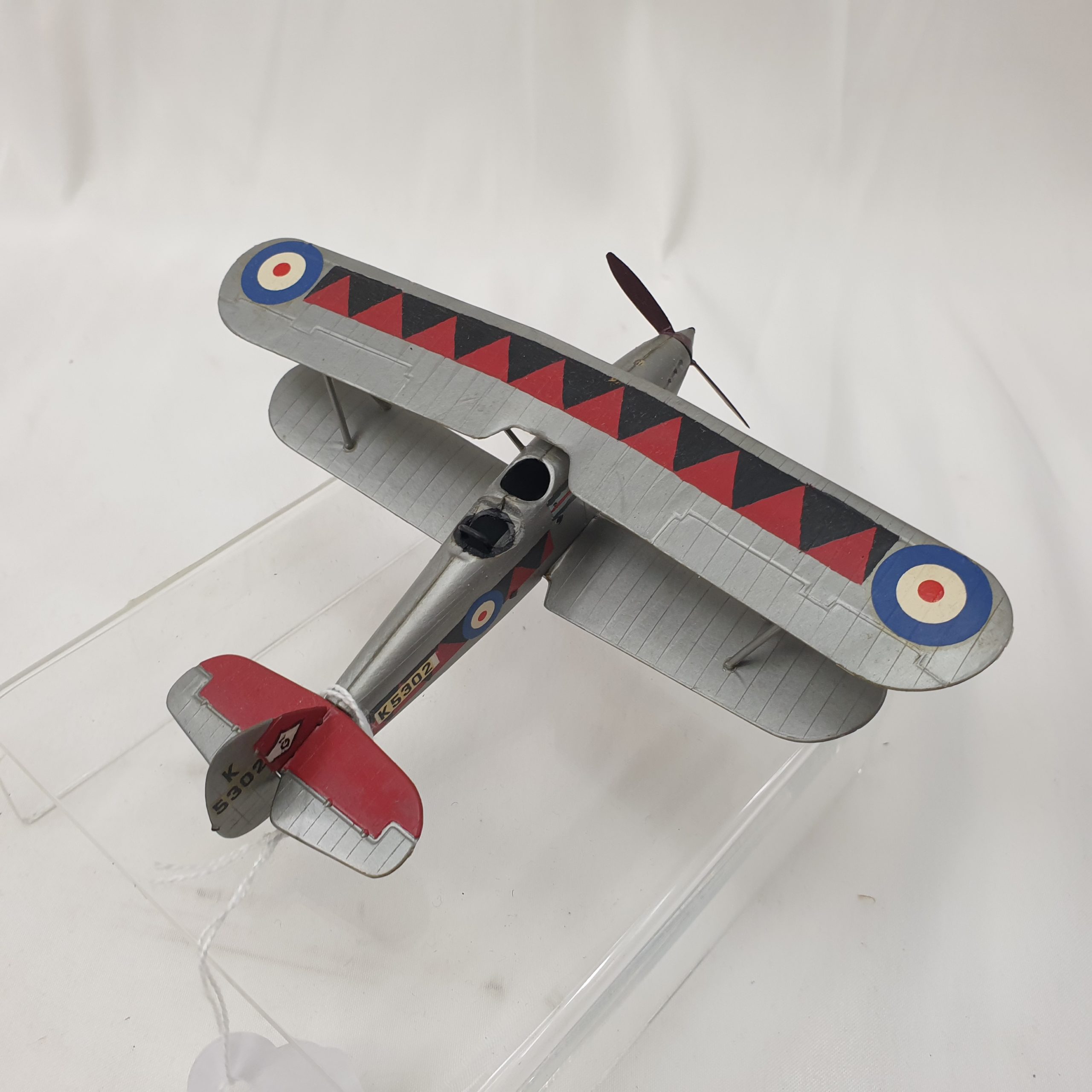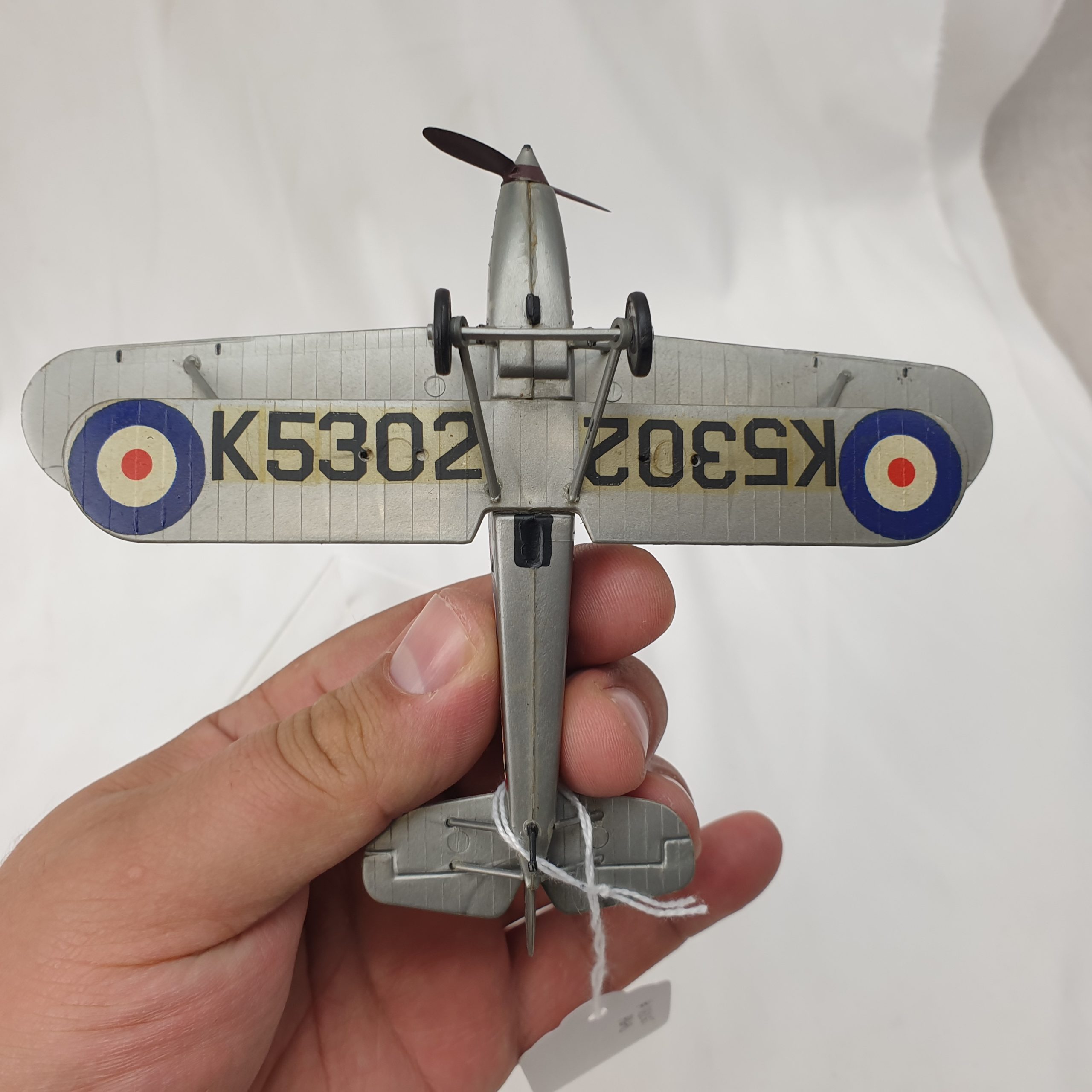~ A 1:72 Scale Model Hawker Hart Biplane ~
The Hawker Hart was a British biplane that served as a versatile and widely used military aircraft during the interwar period, particularly in the 1930s. It played various roles, including light bomber, reconnaissance aircraft, and trainer. Here’s a brief history of the Hawker Hart:
Development: The Hawker Hart was designed by Sydney Camm and was first flown in 1928. It was developed to meet the requirements of the Royal Air Force (RAF) for a replacement for the earlier Airco DH.9A biplane bomber.
Design: The Hart was a biplane with a crew of two, consisting of a pilot and an observer/gunner. It featured a fixed, tailskid undercarriage and had a fabric-covered steel tube fuselage. The wings were made of wood and covered with fabric. It was powered by a variety of engines, including the Rolls-Royce Kestrel and the Bristol Pegasus radial engine.
Variants: The Hawker Hart had several variants, including the Hart I, Hart II, Hart III, and others. Each variant featured improvements in engines, armament, and performance. The Hart II, for example, had an enclosed cockpit for the pilot.
Roles: The primary roles of the Hawker Hart included light bombing, reconnaissance, and army cooperation. It was equipped with a bomb rack under the fuselage and could carry a variety of bombs. Additionally, it could be armed with forward-firing synchronized machine guns and rearward-firing defensive machine guns for self-defense.
Service: The Hawker Hart entered service with the RAF in 1929 and quickly became one of the mainstays of the RAF’s interwar bomber and reconnaissance force. It served in various theaters, including the Middle East, India, and Africa.
Export: The Hart was also exported to several other countries, including Australia, Canada, and South Africa, where it served in their respective air forces.
Biplane Era: The Hawker Hart belonged to the era of biplane military aviation, and it was notable for its reliability and adaptability. It was often used in colonial and imperial roles due to its versatility and ability to operate from rudimentary airfields.
Successor: The Hawker Hart was eventually succeeded by more advanced monoplane designs as World War II approached, including aircraft like the Hawker Hind and the Hawker Hector. However, it continued to serve in secondary roles and as a training aircraft.
Legacy: The Hawker Hart’s legacy is one of versatility and reliability. It was a workhorse aircraft that served the RAF and other air forces effectively during the interwar years. It also contributed to the development of later Hawker aircraft, such as the Hawker Hurricane, which would become a vital British fighter during World War II.
The Hawker Hart was a crucial part of the RAF’s airpower during the interwar period and played a significant role in the development of military aviation in the years leading up to World War II.
~ Condition ~
Please see the pictures.
~ Dimensions ~
The length of the model is 12.5 cm and the wingspan is 16 cm.



